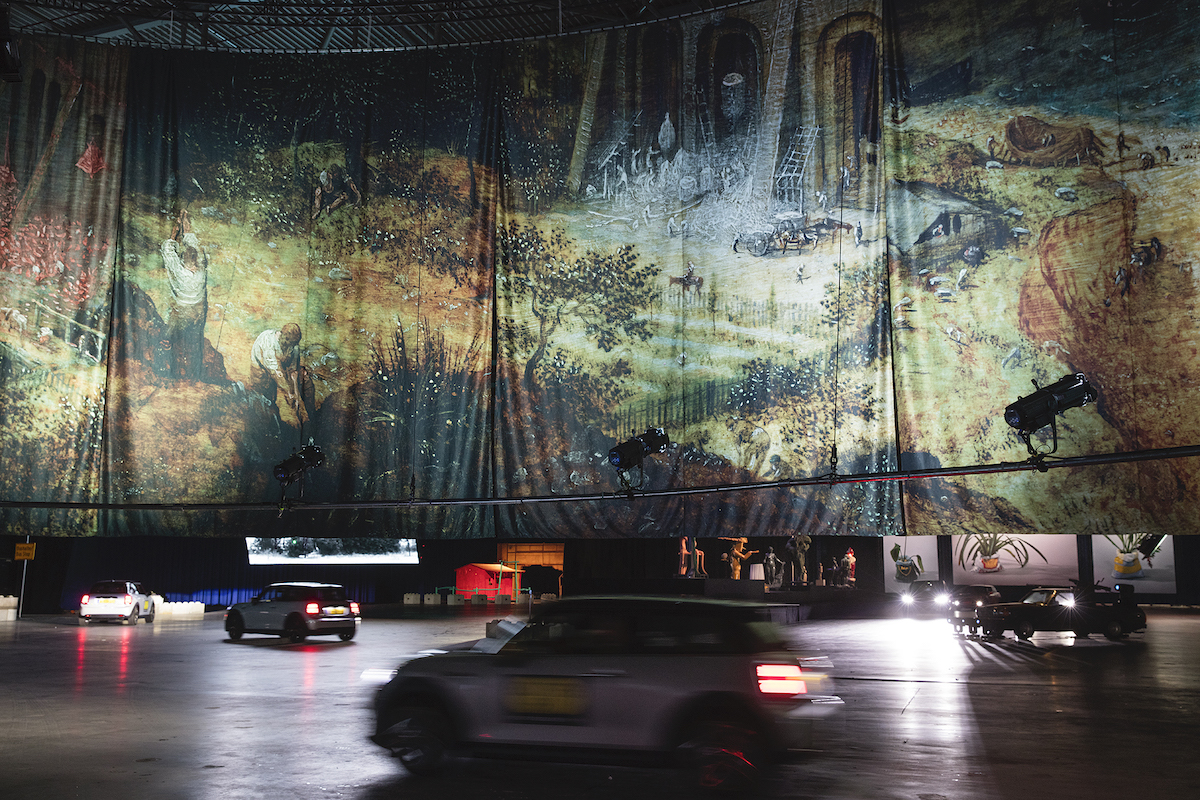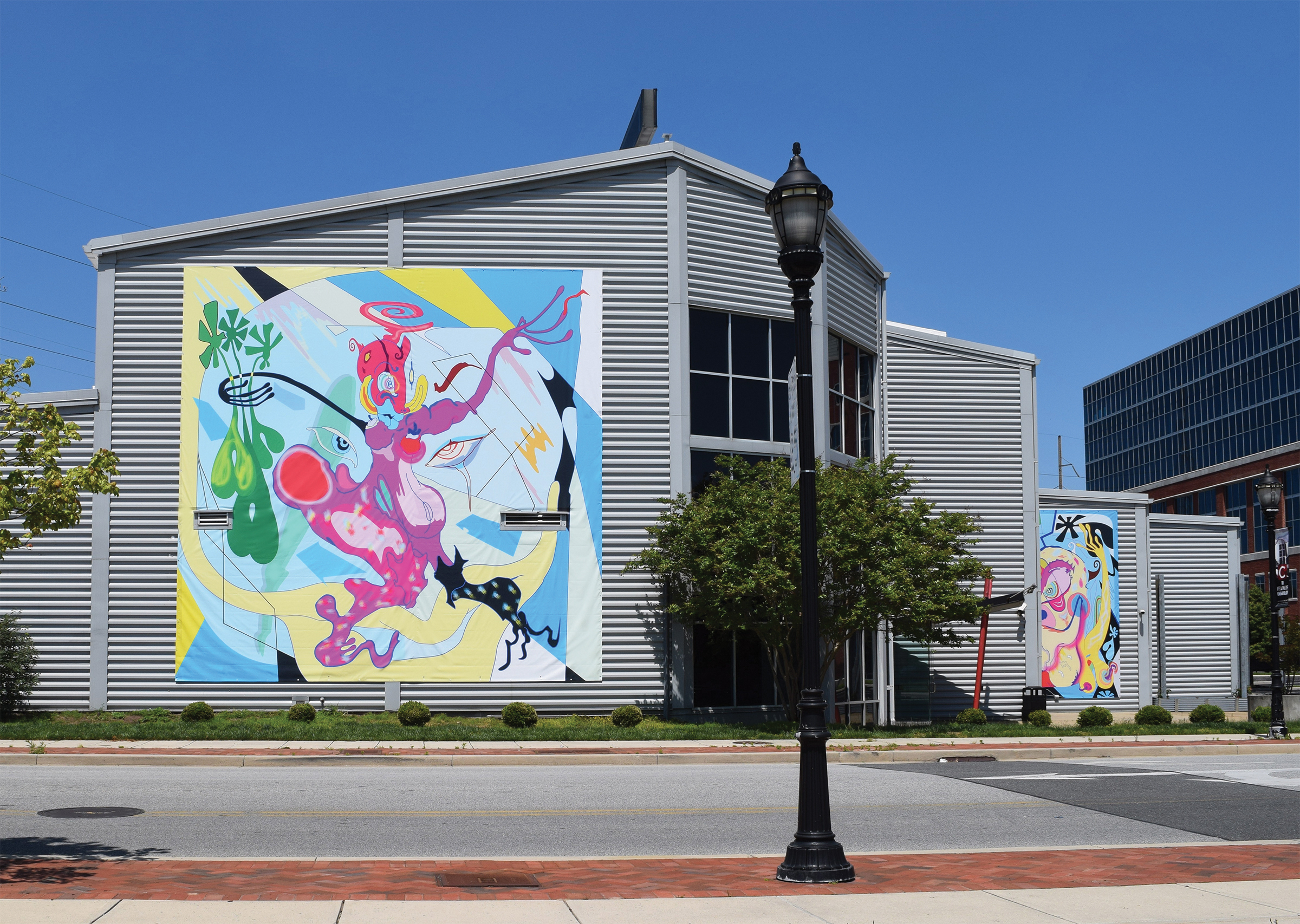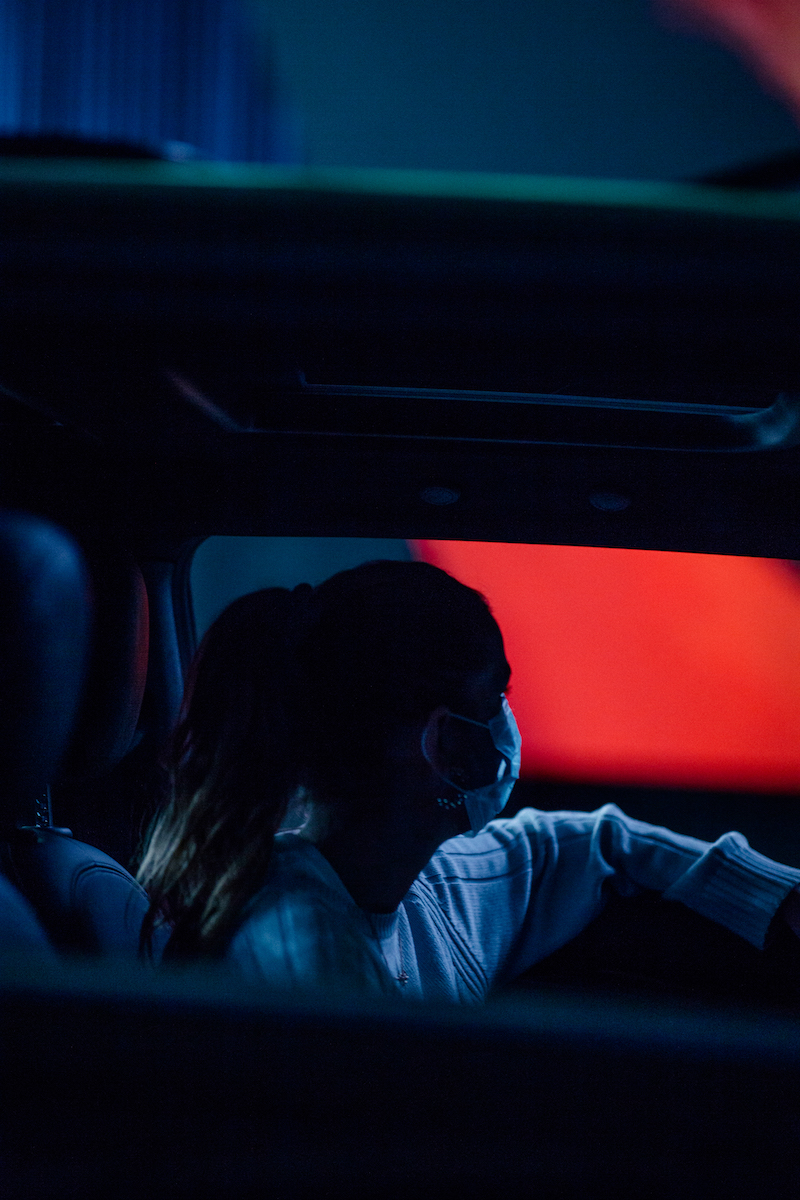
In recent months, most parts of the world have had to come to terms with a new socially-distanced reality. Crowds are now supposedly kept at bay with metres-wide demarcations, face coverings are requested with varying degrees of compliance, and complex one-way systems (with plenty of sanitation stations on route) have been installed everywhere from supermarkets and leisure centres to banks and places of worship.

With such stringent protocols in place it is no wonder that a variety of businesses have looked for ways to diversify. During lockdown, restaurants and bars mobilised takeaway and delivery services, with plenty now using app-ordering and doubling down on online booking as a way of minimising contact. However, a more surprising development has been a resurgence in the drive-through, not only as a way of speed-ordering burgers and fries, but to take in all kinds of culture—including exhibitions.
“The idea of converting cavernous car parks into exhibition spaces is nothing new, but the notion of driving around them is”
While most will be familiar with the nostalgic vision of an American drive-in theatres, which dominated in the 50s and 60s thanks to a boom in car ownership and expendable income, they had long been considered a thing of the past. However, with a vehicle being an ideal way for households to safely distance, they have gained popularity once more. In New York City, for example, the Bel Aire Diner
turned its sizeable car park into a drive-in, with at-window food service. Similarly, in the UK, Luna Cinema has teamed up with the Royal Opera House to broadcast productions on site at some of the UK’s most impressive country houses.

While in-car viewing might not seem like the optimal way to experience visual art, several galleries have experimented with what this new format has to offer. The Delaware Contemporary kept things simple with the opening of Stepping Out to Step In by Theresa Chromati, an external installation which launched with an “art escape drive-thru”, featuring live music and an “art toss” canvas, where guests were invited to throw colour-filled water balloons from the comfort of their vehicle. Although Chromati’s large-scale banners are designed to be enjoyed by the public whether travelling by foot, bike, train or car, their sheer size and graphic sensibility means they are well suited to catching the eyes of those in speedy traffic.

The idea of converting cavernous car parks into exhibition spaces is nothing new (Bold Tendencies and Brewer Street Car Park are two prime examples in London), but the notion of driving around them is less familiar. Nevertheless, Italian dealer Massimo Minini teamed up with BelleArti to present an “antivirus exhibition” in an underground parking lot in Brescia. Art Drive-In Generali features work by Mimmo Paladino, Stefano Arienti, Giovanni Gastel, Osamu Kobayashi
and more, all of whom were asked to present pieces that might lift the spirits of a community just emerging from isolation.
More elaborate experiences have been launched in Toronto—where the rather bombastic Immersive Van Gogh Experience offers visitors the chance to enjoy a 35-minute sound, light and video interpretation of the painter’s most famed works—and in Rotterdam, where 40 pieces from the collection of Museum Boijmans Van Beuningen have been reinstalled in a colossal events hall. The show has capacity for 750 visitors a day, who can enjoy works by the likes of Bruce Nauman, Ugo Rondinone and Anselm Kiefer, while riding in an electric car (you can bring your own or use a vehicle provided).
While there is no way of knowing how long our “new normal” will continue, it is clear that most of the organisers consider these experimental exhibitions to be a short-lived alternative, as opposed to a feasible replacement for more conventional gallery going. Phrases like “once-in-a-lifetime” have been used regularly, pointing to the temporary nature of these endeavours, as well as a more relaxed, consumable approach to exhibition going.

There are of course plenty of arguments as to why driving through an exhibition is not ideal (environmental concerns, space, accessibility and the need for a licence are but a few), but these examples do demonstrate how quickly and imaginatively some organisations can diversify in times of crisis. One would hope that such staging offers a real opportunity for entirely new concepts of display going forward, especially as the crowds expected at your average blockbuster exhibition stay quelled, at least for the time being.
With so many people craving the opportunity to experience anything beyond the domain of their own home and the frame of their electronic devices, innovative and approachable exhibition practices are more in demand than ever. Of course, one can’t expect to see electric cars zooming around a local art gallery any time soon, but the white walls might begin to shift just a little bit.




